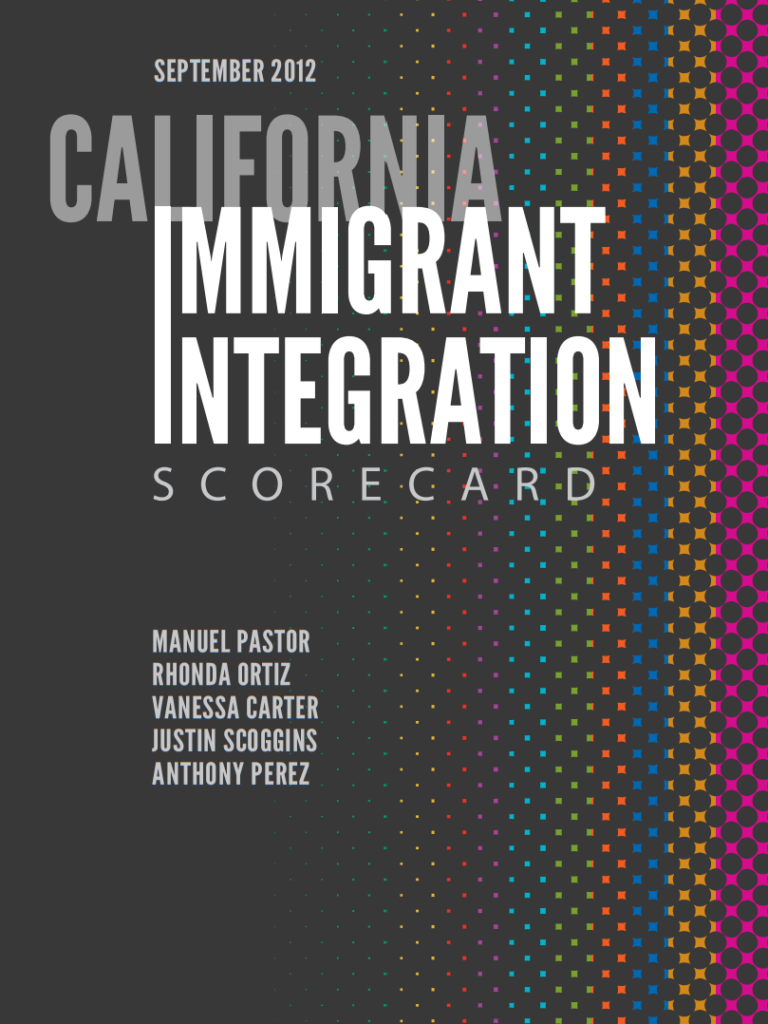
September 12, 2012
By Manuel Pastor, Rhonda Ortiz, Vanessa Carter, Justin Scoggins, and Anthony Perez
Please note: reports dated earlier than June 2020 were published under our previous names: the USC Program for Environmental and Regional Equity (PERE) or the USC Center for the Study of Immigrant Integration (CSII).
In an analysis that was pioneering in its range of data and geography, the California Immigrant Integration Scorecard measured immigrant integration and progress across ten California regions: Santa Clara, East Bay, San Diego, Sacramento, Orange, San Francisco, Inland Empire, Los Angeles, San Joaquin and Fresno. The Scorecard highlighted regions to which others might look for best practices, those that have room to improve, and emphasized the need for statewide strategies.
The Scorecard also showed that immigrant integration can, in fact, be measured and improved. The researchers used a variety of indicators to capture different aspects of immigrant integration in the areas of economic mobility and civic participation as well as the receiving society’s openness. These indicators were grouped into four categories—Economic Snapshot, Economic Trajectory, Warmth of Welcome and Civic Engagement—bringing together 28 indicators of well-being. Finally, they argued that such integration is in the best interest not just of the immigrant community but for the public as a whole.



